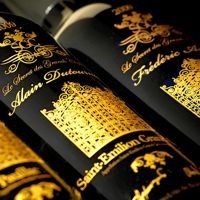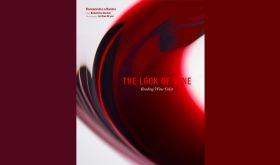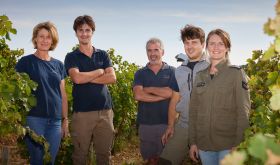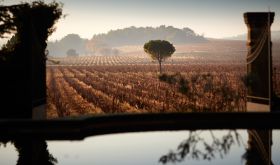Last week, as the 2012 primeurs campaign got underway with rather more speed and sensible pricing than the previous year, I was given a demonstration of a scheme designed to kick the whole Bordeaux system where it hurts most.
I had been approached by a double-barrelled PR man and asked to report to Berkeley Square House, the swathe of offices and suites on top of the Jack Barclay car showroom in London's Mayfair. As I approached Mr Velvet Lapels, who had been waiting for me on the pavement to escort me to a smart rented boardroom, I was amazed to see how many people were gazing at the shiny Bentleys therein, and with what naked cupidity. But that bodes well for the enterprise I was about to be exposed to.
Arnaud Christiaens is betting what I assume is a considerable chunk of his hedge-fund fortune on creating rivals to Bordeaux first growths, the famous handful of names in the top division of the classification of Bordeaux properties drawn up in 1855. Lafite, Latour, Margaux, Mouton and Haut-Brion now command three-digit prices per bottle – far more than even the most highly regarded and cunningly marketed second growths. In fact, last week Chateau Mouton-Rothschild earned plaudits for releasing the first tranche of its 2012 vintage, still in barrel, for 'only' about £200 a bottle.
Immaculately dressed in dark suit, open-necked white shirt and gold cufflinks, with luxuriant tawny locks, he confused me a little at first by declaring 'my model is 1855'. I thought he was referring to the French-based online wine retailer 1855.com that has been notorious for its mismatch between what is paid for and what is delivered, but no. Like many lovers of red bordeaux and status, he is clearly a bit obsessed by the 1855 classification itself. 'When I started studying Bordeaux seriously six years ago, I thought it was strange that it is only a tiny number of wines that we talk about.' His scheme depends on finding vineyards that have the potential to perform as well or almost as well as the first growths and lavishing every attention on them. He says he started with 'a neighbour of Château Latour that's completely unknown. Latour want to buy it actually. The farmer produces only 7,000 bottles of wine a year [Latour produces more like 350,000 bottles]. It's difficult for him to make a living. He also imports olive oil from Spain, for example. I thought, what if we help him to make great wine...?'
Since 2006, Christiaens has been assembling a wine production team and a handful of sites that he reckons are capable of making great wine, even if in tiny quantities. He now has not only the Pauillac vineyard but one in each of St-Émilion and Pomerol across the Gironde on the right bank, and one in the lowly appellation of Médoc. He is launching his 2009s in the UK and the point of my session in the Berkeley Square boardroom was to give me a blind tasting of them with no fewer than four first growths.
I am a veteran of ambitious wine producers and their blind comparisons with first growths – the first I can remember took place in the early 1980s, organised by a New Zealand producer who seems to have completely evaporated – so I approached the exercise with a fair degree of scepticism. In fact, only the presence of world-famous sommelier and fellow Master of Wine Gérard Basset, who has been appointed an advisor to Christiaens, persuaded me to accept the invitation. But even this hardened cynic has to admit that they may be on to something.
Christiaens, Basset, the sales director Frédéric Zantman and I solemnly tasted four 2006 first growths (cost approx £2,000 in total), Christiaens's 2006 St-Émilion and his five 2009s, all swathed in crimson sheaths so that their identities were a mystery – although we all knew which wines were being served. I am not proud of the fact that my favourite wine of all was their Pomerol 2009 and my least favourite was the most expensive 2006 first growth. If one wanted to put an excusing gloss on this, one would point out that 2009 is a much flashier, more immediately appealing vintage than 2006, and that Pomerol is the most generous appellation of all. But perhaps the most impressive achievement of the Christiaens team is that they have managed to fashion a wine from the appellation Médoc that withstands comparison with first growths.
When its identity was revealed, I was dying to know exactly where in the Médoc the vineyard was. 'That's just what Michel said', Christiaens beamed, referring to the French wine critic Michel Bettane. 'We want to keep the secret as much as we can. We don't want François Pinault or Bernard Arnault to come along and buy the vineyard.' Christiaens, who is currently producing just over 40,000 bottles a year from these four properties, would like to add about three more ('We don't have a Margaux yet, for instance.') so that total production is about 125,000 bottles. 'Our first relationship was like a 50-year lease. We let professionals make the wine. Sometimes we have bought equipment for them. One of vineyards knew exactly what to do.' Bordeaux is such a tight-knit, gossip-loving society, I cannot believe he can keep secret the location of these vineyards for very long, but the whole marketing plan relies on secrecy.
I take my hat off to the production values of this enterprise but I have severe doubts about the marketing. If they can't carry vineyard names, this group of wines clearly need a brand name. The one that has been chosen is Le Secret des Grands Chefs (SGC). Each wine is packaged very similarly in a black and gold design eerily similar to Jade Jagger's design for the second wine of Ch Ducru-Beaucaillou (they don't yet have a vineyard in St-Julien either). So far so good – except for the ridiculous weight of the bottles. But to justify the name, each wine is associated with a French chef: Alain Dutournier, Bruno Ménard, Frédéric Anton and Yannick Alléno. The blessing conferred by these names may just work in France, but outside France, and particularly in the US and UK, chef sponsorship is more readily associated with supermarkets and sauces than wine connoisseurship. We certainly wouldn't fall for the notion that a chef had gone out and found his own special vineyard.
Although I was very impressed by the wines, I have to look up those three letters every time. If I were asked, I would suggest a bit of that hedge-fund fortune, instead of offering delivery in central London within two hours of pointing your smartphone at the back label in one of the few restaurants that list SGC wines, was spent on better branding.
THE CHEFS' SECRETS
These ambitious new red bordeaux are available from Hedonism Wines, the most luxurious wine retailer in London, and from www.sgcwine.com. Prices are per bottle.
St-Émilion Grand Cru 2006, £123.50
Pauillac, Bruno Ménard 2009, £291.70
St-Émilion Grand Cru, Alain Dutournier 2009, £246.00
Médoc, Frédéric Anton 2009, £207.80
Pomerol, Yannick Alléno, 2009, £266.70
See my tasting notes on these ambitious new wines.














